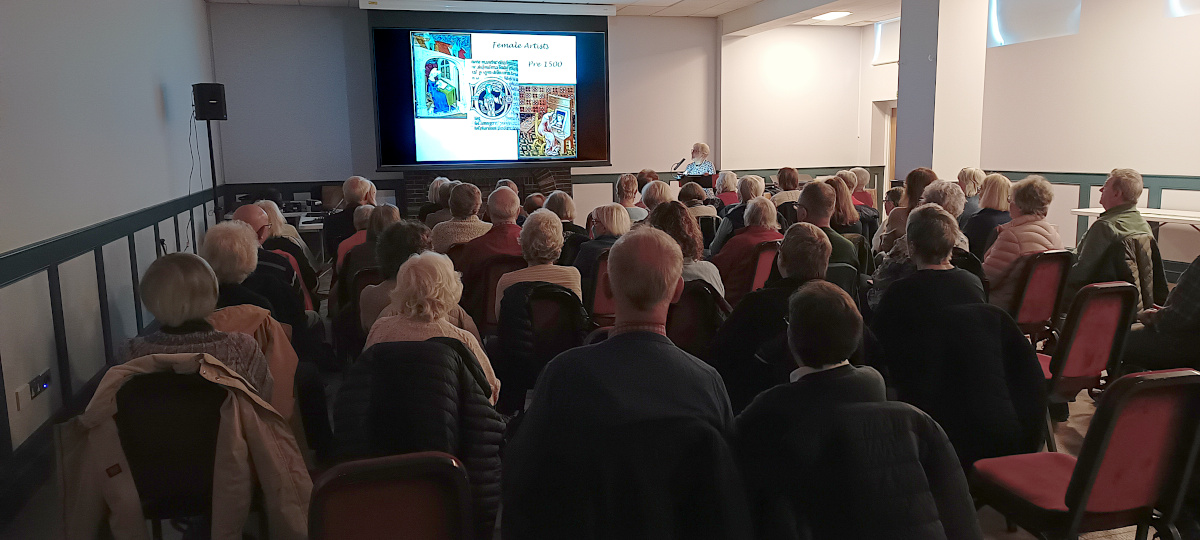On Friday 18 October 2024, we saw the return of Jennifer talking about the role of women in art before the year 1800. Asked why that year, Jennifer replied that setting the limit at 1900 would probably take a whole year to complete the course! Jennifer also reminded us that she would be asking again for contributions from our members towards the end of the course.
We started back in the days of Greece with the roles of the Muses. There were no less than 9 muses and all were female, though they were coordinated through Apollo. They were responsible for inspiration, although there was no muse dedicated to the visual or pictorial arts. Jennifer then showed us examples from 400BC to 1800AD illustrating the how women have inspired artists through the ages.
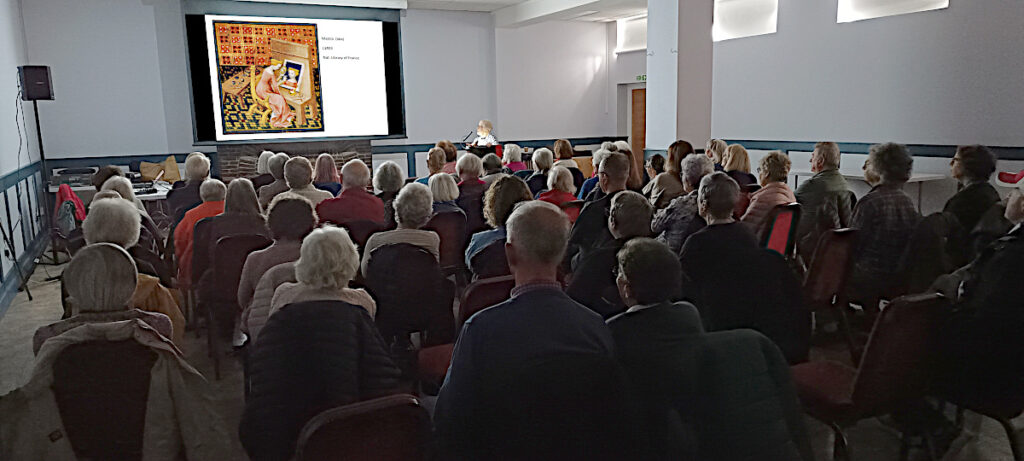
We were then shown a painting of a woman doing a self-portrait which shows her face in profile and square on – as well as in the hand mirror she is using as an aid. This painting is dated c.1403 AD.
But women had also been creating art through the ages. Early examples were to be found on Greek vases, showing women involved in decorating pottery in 5th Century BC, and in Pompei with frescoes showing women as painters and as sculptors. And with the illustrations of manuscripts being done by both men and women in various religious centres, we were shown what was thought to be the earliest signed work of art by a woman, possibly called En or Ende, who had illustrated a manuscript known as the Beatus Gerona in 975AD in Northern Spain.
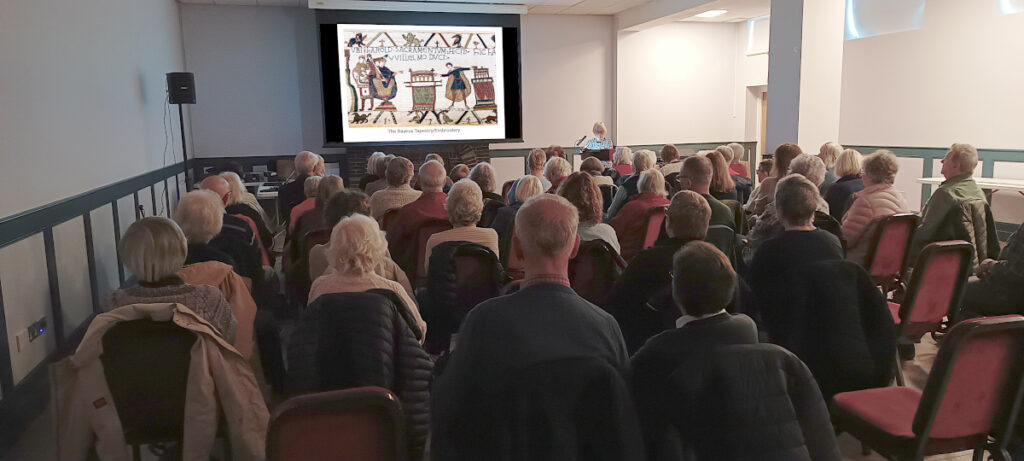
From 10th C Spain we moved to 11th C England and there, we got to the Bayeux Tapestry which was created by nuns in England, and although called a tapestry it is actually an embroidery! We also learned about women stone masons playing a full part in the construction of Strasbourg Cathedral. In fact Jennifer took us through images of women portrayed as woodcutters, blacksmiths, coopers, carpenters, farmers and builders in many manuscripts from the time.
Jennifer also mentioned the upcoming event at the British Library on Medieval Women in their own words. You can read more about that here. Much of the work created by women relates to religious activities, and Jennifer showed us a wide selection of Bishops’ copes and chasubles which had been woven or embroidered in silk.
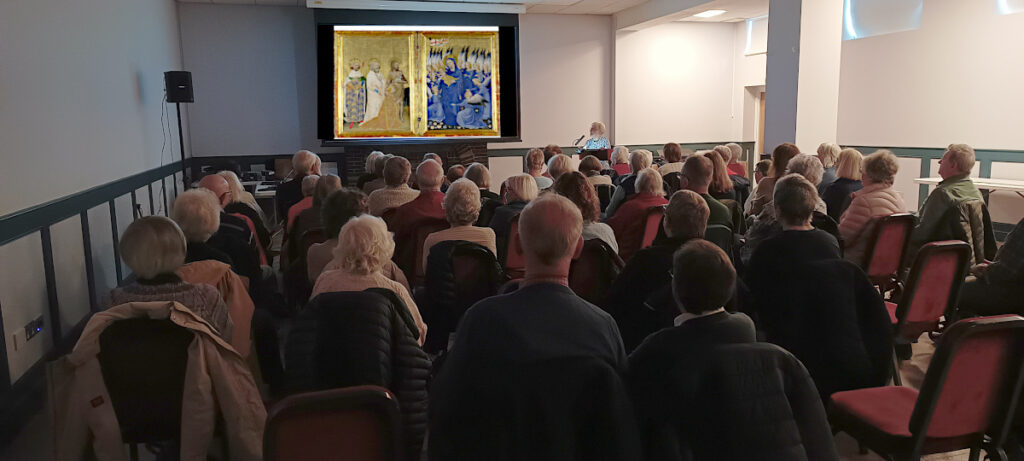
We finished with a two panel diptych – The Wilton Diptych – which can be seen at the National Gallery. That work was believed to have been a portable religious item which showed Richard II (who is thought to have owned it) being introduced to the Virgin and Child Christ by St John the Baptist, and two English Saints – Edward the Confessor and Edmund the Martyr. Jennifer pointed out the significance of the work and highlighted that one panel was all male, and the other was nearly all female. Close-ups of the diptych revealed amazing details.
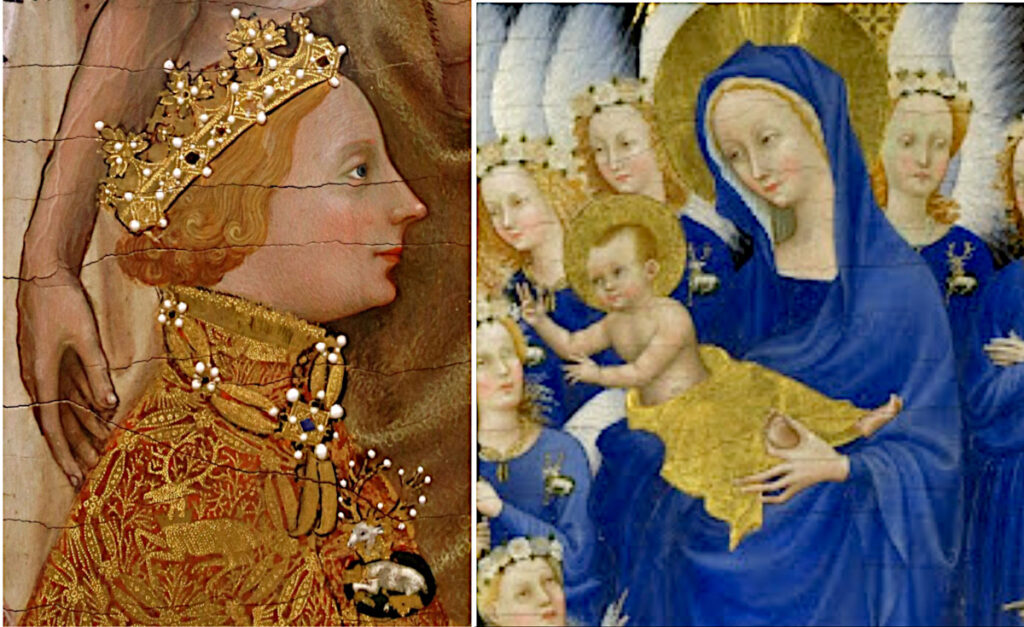
Our next session will be on Female Artists in Tudor and Stuart England and take place on 01 November 2024.

